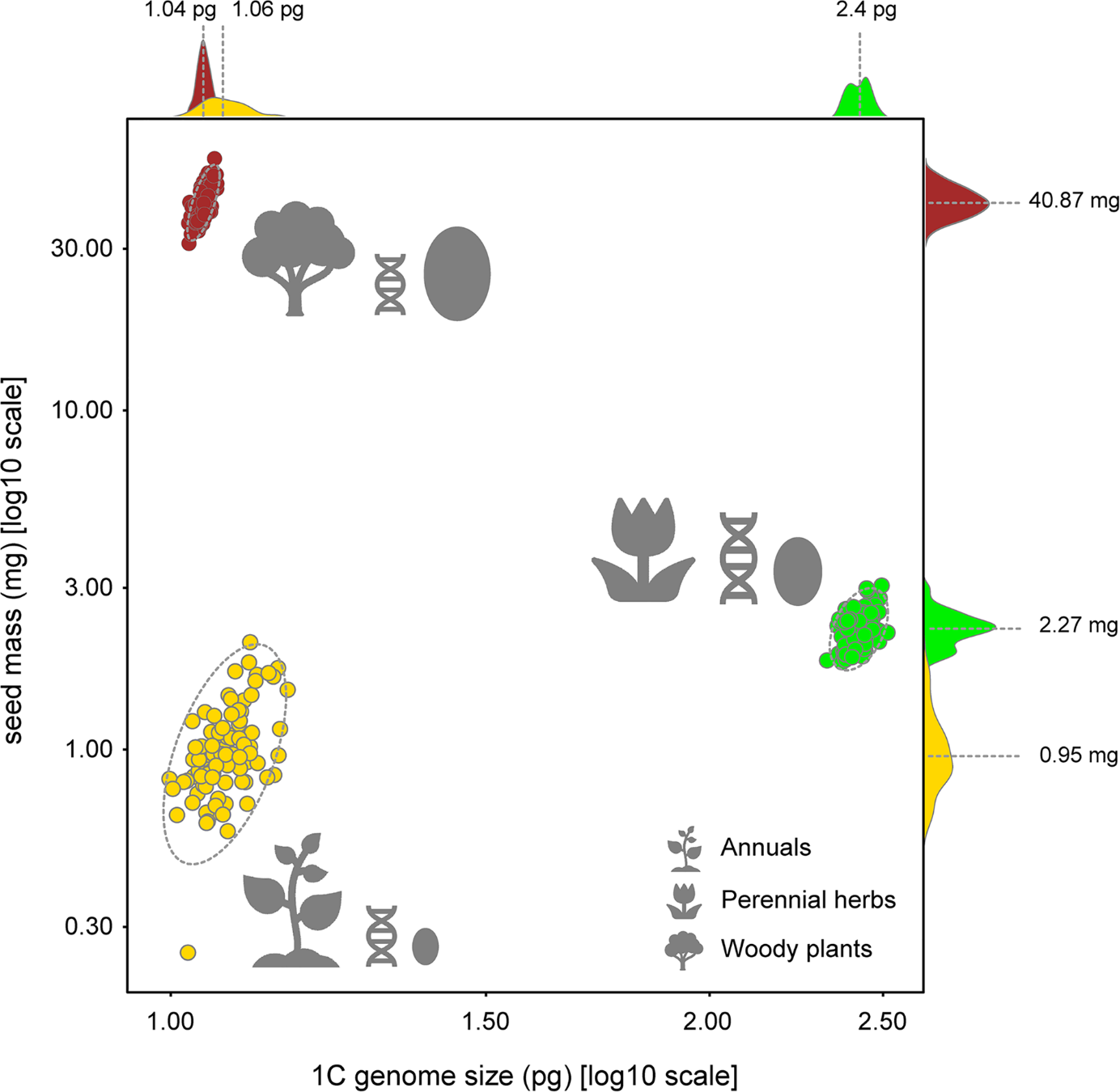[Science news] - Evolution of seed size and genome size depends on plant life-form
One of the main reasons for the evolutionary success of flowering plants is the great diversity in form and function of seeds. Flowering plants show a very large diversity in seed size, ranging from dusty seeds of orchids to the 30 kg coco de mer fruit (Lodoicea maldivica) from the palm family. The size of seeds is an ecologically very important characteristic of plants, as it strongly determines the ecological strategy of plant species.
This study, conducted by collaborators of Meise Botanic Garden, University of Pisa and Royal Botanic Gardens, Kew, explored the evolutionary relationships between seed size, genome size, and life form for more than 3,000 species of flowering plants. Advanced evolutionary models were able to show that evolution towards small seeds and a small genome has occurred in annual species. Small seeds and a small genome are two characteristics that allow annual species to complete their life cycles within one year. In contrast, in perennial herbs and woody plants, which are often characterized by larger seeds, a clear evolutionary relationship with genome size was not always found.
The results of this work will help us to better understand how plants respond evolutionarily to a changing climate, but also to, for example, the domestication process of economically important species.

Legende: Relationship between genome size and seed size for annual, perennial and woody plants.
Credit: Angelino Carta
Relevant publication
Carta, A., Mattana, E., Dickie, J., & Vandelook, F. (2022). Correlated evolution of seed mass and genome size varies among life forms in flowering plants. Seed Science Research, In Press
https://doi.org/10.1017/S0960258522000071



